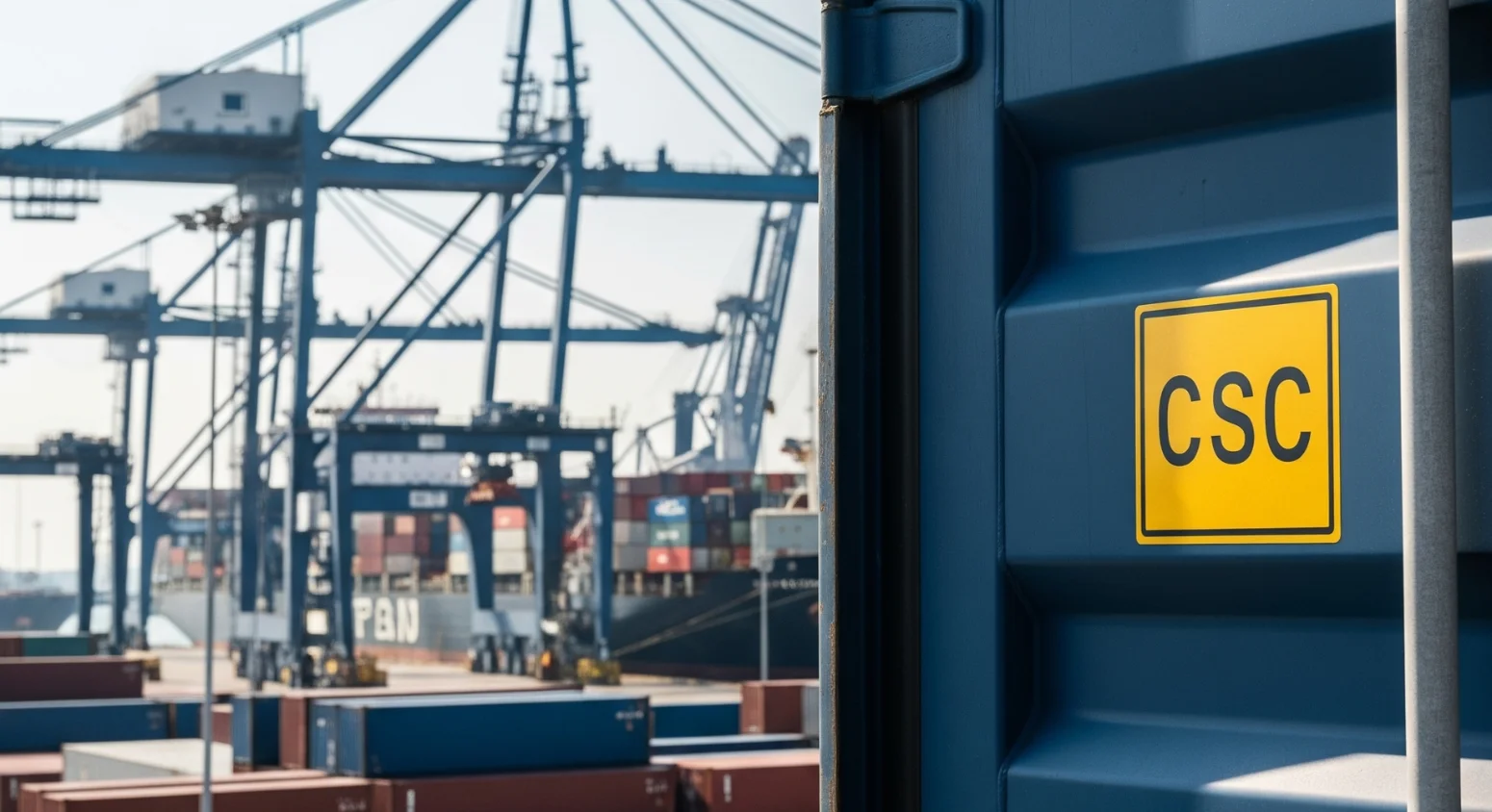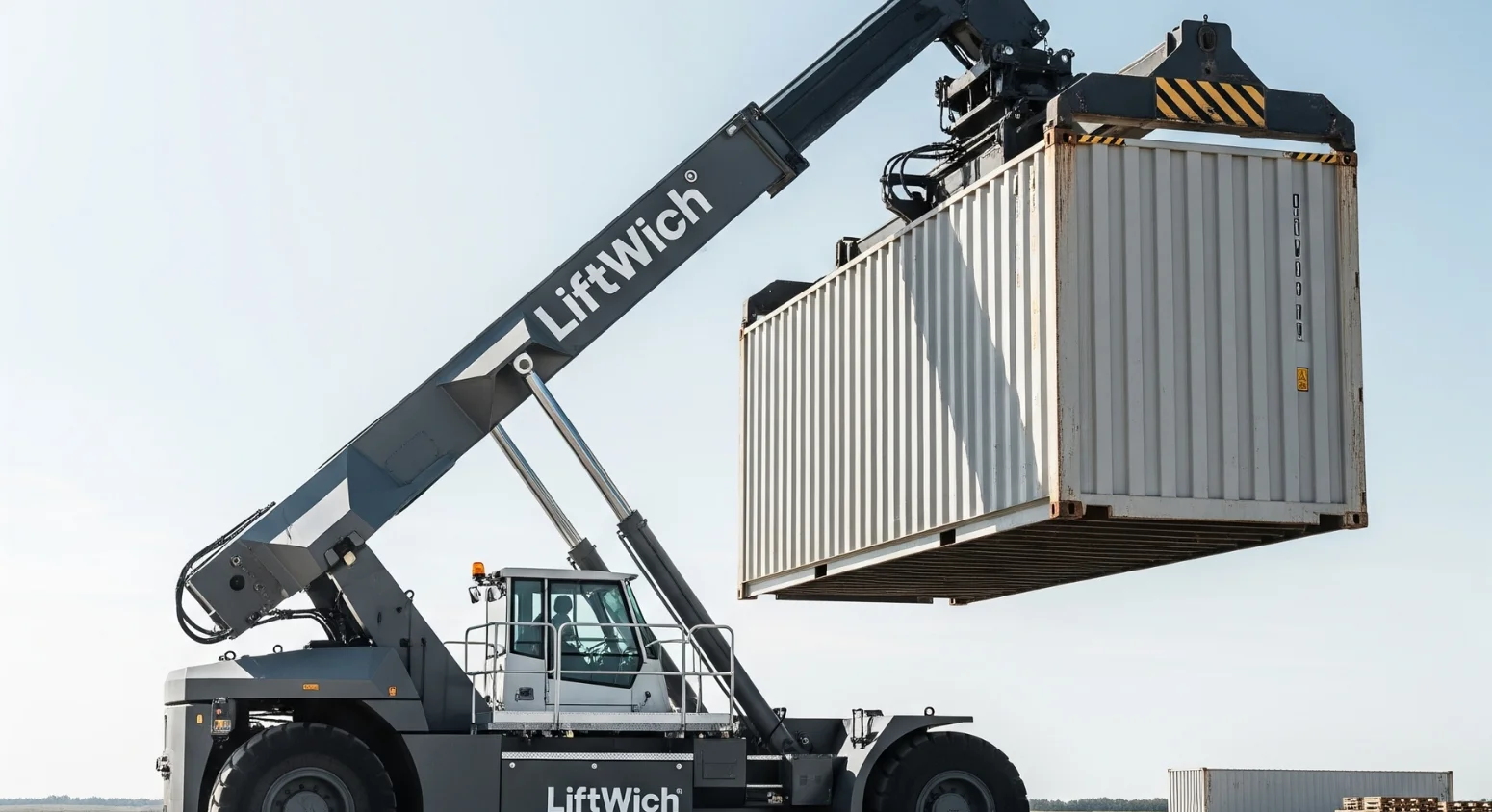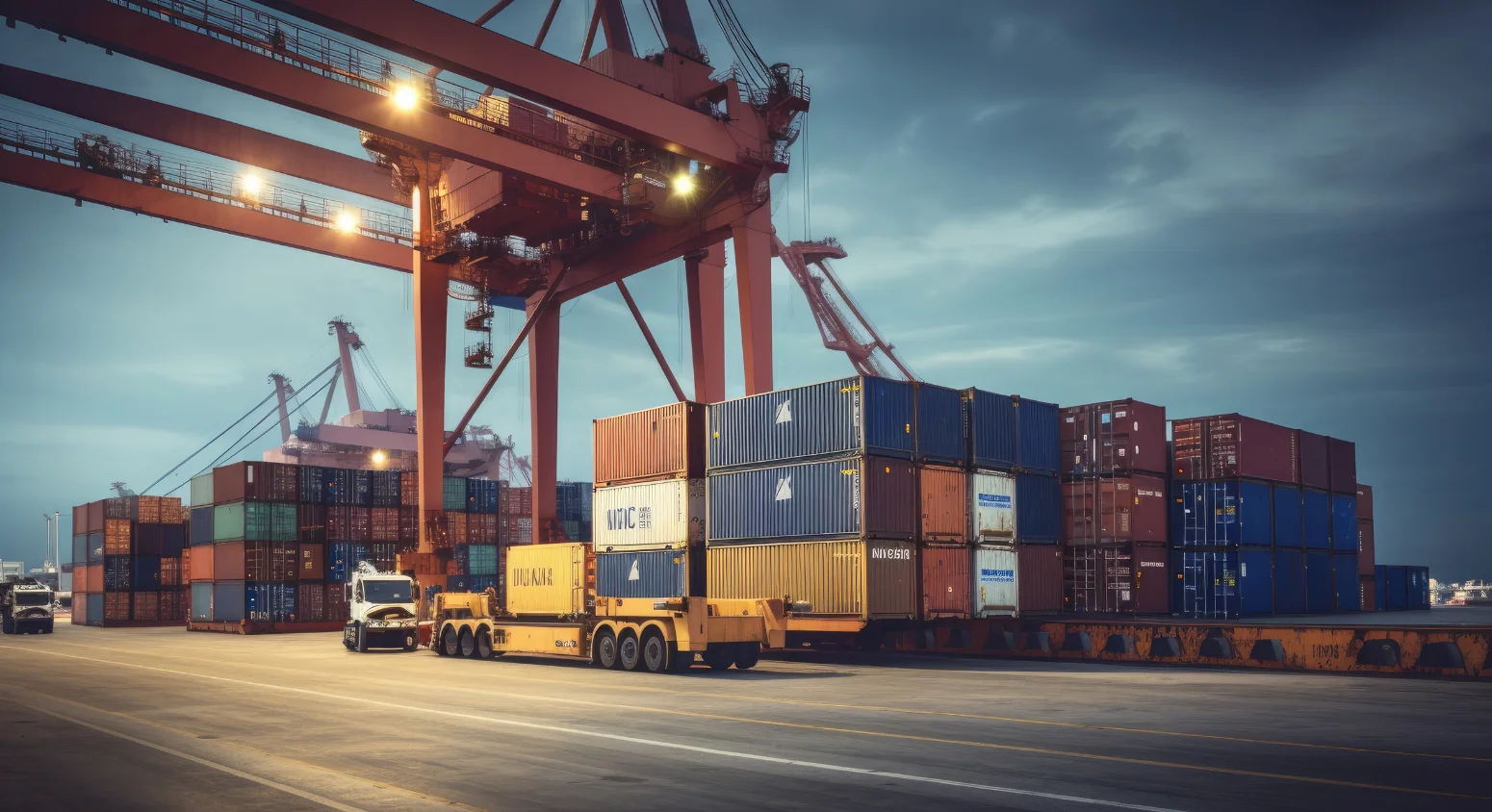Have you ever seen those big metal boxes on ships, trains, or trucks and wondered what they’re for? Those are called ISO shipping containers, and they play a huge role in how products move around the world. From food and furniture to cars and tools, these containers help carry just about everything you can imagine.
But what makes an ISO container special? Why are they used so often in shipping and storage? And did you know there are different types for different jobs?
In this blog, we’ll explain what ISO shipping containers are, the different kinds you might see, and how people and businesses use them every day. Whether you’re in shipping, need extra space, or are just curious, this guide will help you understand the basics in a clear and simple way. Let’s take a closer look at these useful storage containers and why they matter.
Table of Contents
1. What Defines an ISO Shipping Container?
When you think of shipping containers, you might picture a stack of steel boxes on a cargo ship or a row of units behind a warehouse. But not all containers are created equal. So, what exactly sets an ISO shipping container apart?
The answer lies in standardization. ISO stands for the International Organization for Standardization, which creates global standards for everything from safety to size. An ISO container follows these exact standards—making it reliable, interchangeable, and easy to move across different types of transport, like ships, trains, and trucks.
Key Features of ISO Shipping Containers
Here’s what makes an ISO container unique:
- Standard Sizes: ISO containers usually come in lengths of 20 or 40 feet, with uniform widths and heights. This sizing ensures they fit perfectly in cargo holds and on transport equipment anywhere in the world.
- Strong, Durable Materials: Most ISO containers are made from corrosion-resistant steel and designed to handle extreme conditions—from rough seas to scorching sun.
- Secure Locking Systems: Doors are equipped with standardized locking mechanisms to keep contents safe during long journeys.
- Stackable Design: Thanks to their precise dimensions and corner fittings, these containers can be stacked and secured safely during transport.
Why Standardization Matters
You might be wondering, “Why is standardization so important?” Here’s why it benefits everyone involved in shipping and storage:
- Efficiency: Standardized containers simplify loading and unloading, saving time and reducing labor costs.
- Compatibility: They work seamlessly across ports, vehicles, and cranes—no need to worry about mismatched equipment.
- Safety: Predictable sizes and weight limits help prevent overloading and structural failures.
- Cost Savings: With fewer modifications needed for transport, companies save on logistics and operational expenses.
In short, ISO shipping containers bring order and efficiency to a complex global system. They’re not just metal boxes—they’re a carefully engineered solution to moving goods across the planet safely and reliably.
As we move into the next section, you’ll discover the different types of ISO containers and how each one serves a specific purpose in the world of transport and storage containers.
2. Primary Types of ISO Shipping Containers
Not all cargo is created equal—so why should every container be the same? That’s the beauty of the ISO container system. While these containers follow strict size and quality standards, they come in several types, each designed to meet specific needs in shipping and storage.
Whether you’re transporting dry goods, oversized machinery, or perishable items, there’s a container built for the job. Let’s explore the most common types you’ll find in ports, warehouses, and logistics hubs around the world.
1. Dry Storage Containers
These are the classic containers you probably think of first.
- Most widely used type of ISO shipping container
- Designed for general-purpose cargo: boxes, pallets, crates, and more
- Available in 10ft, 20ft, and 40ft lengths
- Fully enclosed to protect items from the elements
Ideal for: non-perishable goods, furniture, electronics, tools
2. Flat Rack Containers
Need to move something wide, heavy, or oddly shaped? Flat racks are your go-to.
- Feature collapsible or fixed ends for flexibility
- Open sides allow for easy loading of oversized equipment
- Built with reinforced steel frames for added strength
Ideal for: construction machinery, vehicles, pipes, and timber
3. Open Top Containers
Got cargo that can’t fit through standard doors or needs to be loaded from above?
- No fixed roof—covered with a removable tarp
- Support top-loading by crane or other vertical equipment
- Provide more height flexibility
Ideal for: heavy machinery, large engines, and tall industrial components
4. Refrigerated Containers (Reefers)
If temperature matters, these containers deliver—literally.
- Equipped with built-in cooling systems
- Maintain precise temperature ranges from -25°C to +25°C
- Plug into ship, truck, or port power sources
Ideal for: food, medicine, flowers, and other perishable goods
5. Tank Containers
When transporting liquids, gases, or chemicals, safety is everything.
- Built with a stainless steel tank inside a protective frame
- Meet strict ISO safety and transport standards
- Handle both hazardous and non-hazardous substances
Ideal for: fuel, oils, alcohol, water, and industrial chemicals
Also Read: Top Container Handling Equipment for All-Scale Operations
3. Specialized ISO Container Variations
By now, you’ve seen how standard ISO shipping containers serve a wide range of needs—but what happens when your cargo demands even more customization? That’s where specialized ISO containers come in. These unique variations go beyond the basics to solve very specific logistical challenges.
If you’re handling sensitive products, navigating tight spaces, or just looking for more flexibility in loading and storage, these containers might be exactly what you need.
Ventilated Containers
Do your goods need to breathe? Ventilated containers are built to keep airflow consistent, preventing moisture buildup and spoilage.
- Fitted with air vents along the side panels
- Protect cargo from mold and heat damage
- Ideal for long-distance transport in humid climates
Best for: coffee beans, cocoa, agricultural produce
Insulated Containers
Not everything needs refrigeration, but many goods still require stable temperatures. That’s where insulated ISO containers shine.
- Use a thick lining to buffer against external temperature changes
- No active cooling, but better than a standard box for sensitive cargo
- Helps maintain quality during unpredictable weather
Best for: pharmaceuticals, dairy products, and heat-sensitive items
Double Door and Side Door Containers
What if loading from one end just isn’t enough? These containers offer greater accessibility and speed up operations.
- Double doors at both ends for drive-through convenience
- Side doors for easier access to wide or palletized items
- Simplify inventory management and faster cargo rotation
Best for: retail stock, equipment, and quick-turnaround shipments
Half-Height Containers
Need strength in a smaller package? Half-height containers are compact but incredibly strong.
- Built lower to the ground—easy to load with cranes or dumpers
- Keep heavy materials more stable during transit
- Minimize empty space when carrying dense cargo
Best for: mining materials, stones, and heavy scrap
Swap Body Units (Primarily in Europe)
These may not be as common globally, but in Europe, swap bodies are a smart choice for intermodal transport.
- Designed for easy transfer between road and rail
- Larger internal volume than standard ISO containers
- Not suitable for stacking, but perfect for short-haul efficiency
Best for: parcel delivery, express logistics, and regional freight
Explore: 5 Common Container Transport Challenges with Solutions
4. Key Applications Across Industries
You might be surprised at how often ISO shipping containers show up in places you wouldn’t expect. Sure, they’re designed for transporting cargo across oceans—but their uses go far beyond ships and seaports.
Thanks to their durability, standardized design, and versatility, ISO containers have become essential tools across a wide range of industries. Let’s explore where and how these containers are being put to work every day.
1. Global Shipping and Freight Transport
This is where ISO containers shine the brightest.
- Used to move goods across continents by sea, rail, and road
- Compatible with cranes, forklifts, trucks, and cargo ships worldwide
- Help businesses streamline international logistics
Whether it’s electronics from Asia or furniture headed to Europe, ISO containers are the backbone of global trade.
Know More: All About Shipping Container Moving Systems
2. On-Site Storage and Warehousing
Need quick, secure, and portable storage? You’re not alone.
- Many companies use storage containers for temporary or long-term storage
- Ideal for storing equipment, tools, raw materials, or seasonal stock
- Weatherproof and lockable for peace of mind
Construction sites, retail locations, and schools often turn to ISO containers to solve space issues fast.
3. Modular Construction and Pop-Up Architecture
Think containers are only for shipping? Think again.
- Architects and builders repurpose ISO containers into offices, cafes, homes, and even hotels
- Stackable and customizable, they’re great for creative, low-cost builds
- Offer rapid deployment with minimal site disruption
From trendy coffee shops to emergency housing units, container-based structures are changing the way we think about construction.
4. Military and Emergency Deployment
Speed and reliability are everything in high-stakes situations.
- ISO containers serve as mobile command units, field hospitals, and secure supply stations
- Their standard dimensions make them easy to load, ship, and set up quickly
- Withstand tough environments while keeping contents protected
Disaster relief teams and military forces worldwide rely on them for rapid-response logistics.
5. Offshore and Industrial Equipment Housing
Harsh environments demand strong solutions.
- Containers are used to store tools, parts, and safety gear on oil rigs and industrial sites
- Modified with insulation, lighting, and ventilation for specific tasks
- Durable enough to handle rough weather and tough conditions
When you need reliable infrastructure in a remote or rugged location, ISO containers deliver.
Also Read: Essential Container Handling Tools for Tough Jobs
5. Why ISO Shipping Containers Are a Smart Investment
At this point, you might be thinking: Is investing in an ISO container really worth it? Whether you’re a business owner looking to expand storage or a project manager navigating logistics, the answer is often yes—and here’s why.
ISO shipping containers aren’t just practical; they’re designed for efficiency, safety, and long-term use. Let’s break down the benefits that make them a reliable, cost-effective solution across a wide range of needs.
1. Global Compatibility
ISO standards mean seamless operations.
- Easily transferred between ships, trucks, and trains
- Accepted at ports and depots around the world
- Fit with existing handling equipment (cranes, forklifts, chassis)
This compatibility reduces delays and simplifies every step of the supply chain.
2. Built for Durability
When you invest in an ISO container, you’re investing in strength.
- Constructed from heavy-duty, weather-resistant steel
- Designed to withstand extreme temperatures, moisture, and rough handling
- Lifespan of 15–25 years with minimal maintenance
Whether on a job site or crossing the ocean, they’re built to last.
3. Secure and Theft-Resistant
Worried about theft or damage? These containers are built like fortresses.
- Lockable double doors with standardized security fittings
- Can be modified with additional locks, alarms, or cameras
- Keeps valuable inventory or tools safe in remote locations
Security and peace of mind come standard.
4. Versatile for Storage and More
It’s not just about transport anymore.
- Many use these storage containers for pop-up shops, remote offices, or even mobile clinics
- Easy to modify with doors, windows, insulation, lighting, and shelving
- Quick to deploy and move as needs change
Their versatility is a major selling point, especially for industries that demand agility.
5. Cost-Effective Over Time
Let’s talk numbers—because long-term savings matter.
- Lower operational costs due to durability and multi-use functionality
- Reusable over hundreds of transport cycles
- Available for rent or purchase depending on your project scope
You avoid repeat investments by choosing a container that performs again and again.
6. How to Choose the Right ISO Shipping Container for Your Needs
Choosing the right ISO shipping container might feel overwhelming at first—there are so many types, sizes, and features to consider. But don’t worry, with the right questions and a bit of insight, you can find a container that fits your exact needs—whether you’re managing logistics, building a mobile office, or simply looking for reliable storage containers.
Let’s break it down together.
Step 1: Identify the Purpose
Start by asking yourself: What am I using this container for?
- Transport – Will it travel long distances? If yes, focus on standard dry containers or reefers for perishables.
- Storage – Is it staying in one location? Look into used ISO containers for cost savings.
- Modification – Planning a workshop, pop-up space, or remote office? Go for containers that are easy to customize like high-cube or side-door units.
Knowing the purpose helps you eliminate unnecessary options right away.
Step 2: Choose the Right Size
The most common sizes are 20ft and 40ft, but that doesn’t mean they’re the only ones.
- 10ft – Great for tight spaces or small storage needs
- 20ft – Ideal for general use, easy to transport
- 40ft – Best for bulk cargo or large-scale storage
If you’re moving heavy or high-volume loads, a 40ft ISO container will offer the most value per cubic foot.
Step 3: Consider Special Features
Think about any cargo-specific requirements:
- Does your cargo need ventilation? → Try ventilated containers.
- Need temperature control? → A reefer is the way to go.
- Need access from the side? → Side-door containers make loading much easier.
- Working in a tough environment? → Go with corrosion-resistant, reinforced steel builds.
These small details make a big difference in the container’s performance.
Step 4: Think About Portability and Handling
If you’ll be moving the container around regularly—or placing it in tight or uneven areas—handling becomes a key factor.
This is where TriWich’s LiftWich system can offer serious advantages.
💡 TriWich Product Suggestion: LiftWich
Looking for a safe and easy way to lift and position your ISO container without needing a crane or forklift?
LiftWich by TriWich is a powerful, compact tool that lets you lift fully loaded containers from the ground in a controlled, balanced way—perfect for:
- Construction sites
- Mobile storage deployments
- Rural or off-grid setups
With LiftWich, container mobility becomes faster, safer, and more efficient—no heavy equipment required.
Step 5: New or Used?
Finally, decide between buying new or used. Both have their pros and cons.
New ISO Containers
- Clean, no wear and tear
- Great for branding or long-term use
Used ISO Containers
Often just as functional, especially for storage
Budget-friendly
Explore: How to Move a Container with a Truck?
Conclusion
When it comes to moving goods efficiently and securely, understanding what an ISO shipping container is and how it fits into your logistics or storage needs can make all the difference. Have you ever stopped to think about the engineering and planning behind those sturdy steel boxes that travel across oceans and lands? They’re not just simple containers—they’re standardized solutions designed to simplify global trade, protect your cargo, and offer versatility for countless applications.
Whether you’re shipping products worldwide or looking for reliable storage containers on-site, ISO containers provide a trusted, durable, and cost-effective option. With various types—from dry storage and refrigerated to flat racks and specialized insulated units—you have options tailored to your unique challenges. Knowing how to choose the right container means you’re better equipped to save time, cut costs, and keep your goods safe.
So, what’s your next step? Are you ready to leverage the power of ISO containers to improve your shipping or storage operations? The right container can transform how you do business, making complex logistics feel simpler and more manageable.
FAQs
1. What does ISO stand for in ISO shipping containers?
ISO stands for the International Organization for Standardization, which sets global standards for container sizes, strength, and design to ensure compatibility worldwide.
2. Can ISO shipping containers be used for storage on land?
Absolutely! Many businesses use ISO containers as secure, weatherproof storage units on-site for equipment, materials, or inventory.
3. How do I choose the right ISO container size?
Consider your cargo’s volume, weight, and handling needs. Standard sizes are typically 20ft and 40ft, but smaller or specialized containers are available based on your requirements.
4. Are ISO containers reusable and durable?
Yes, ISO containers are built from strong steel to last for 15 to 25 years or more with proper care, making them a cost-effective, long-term investment for transport and storage.



